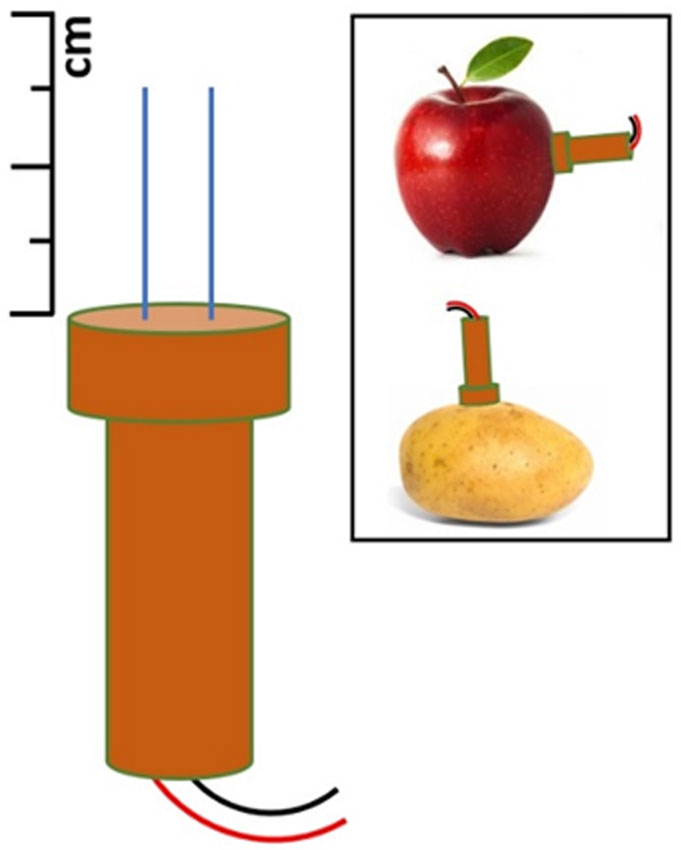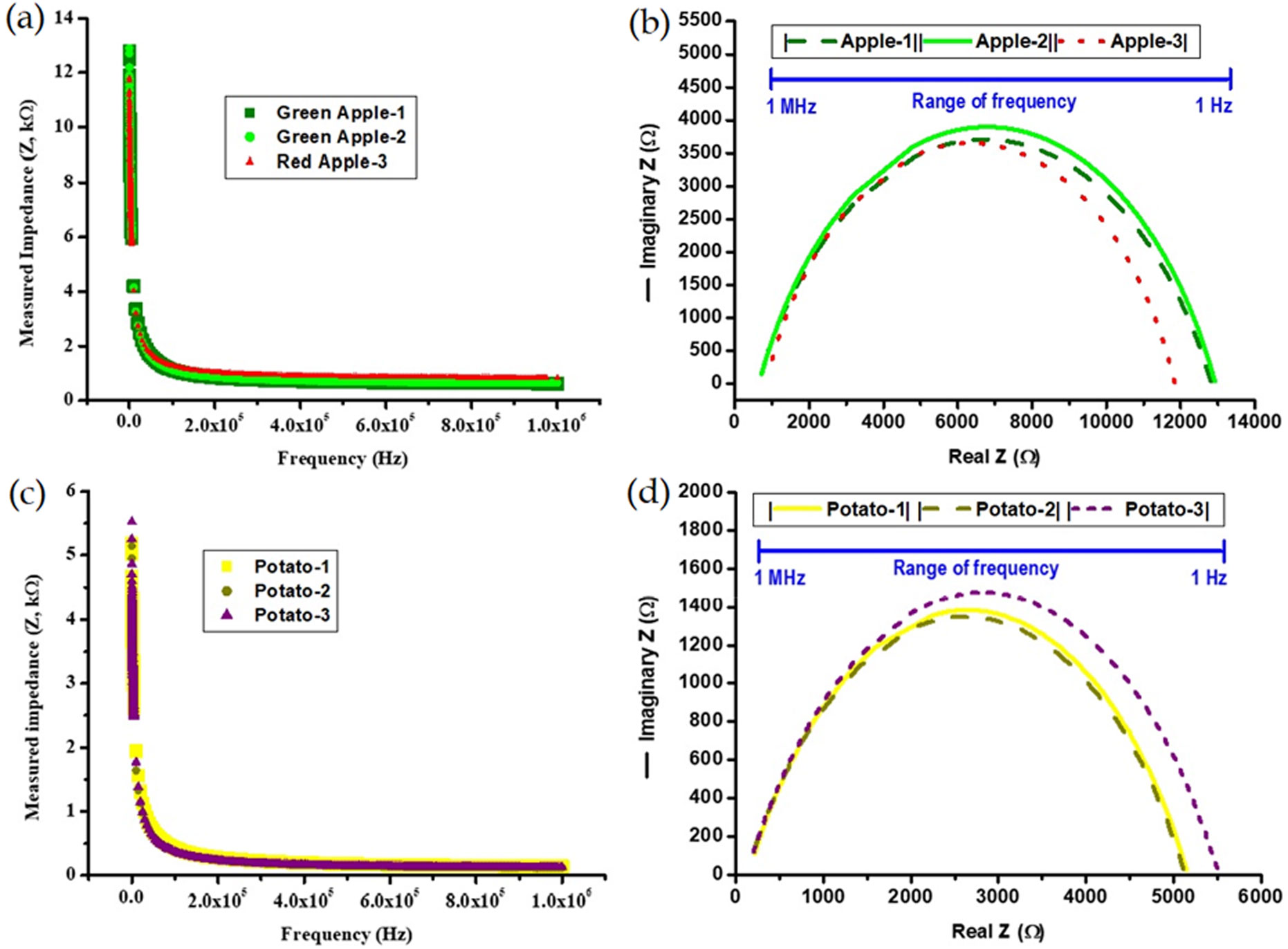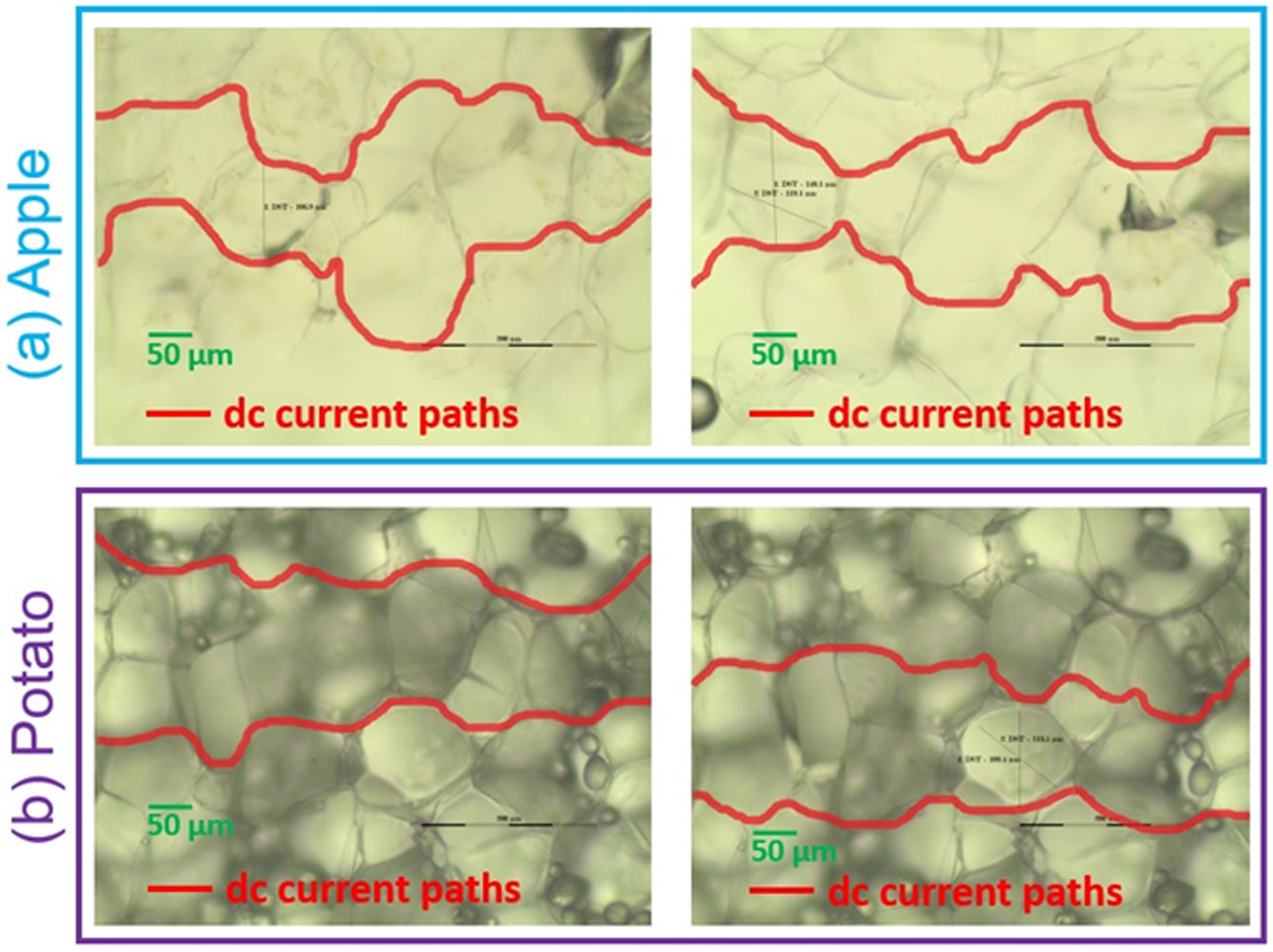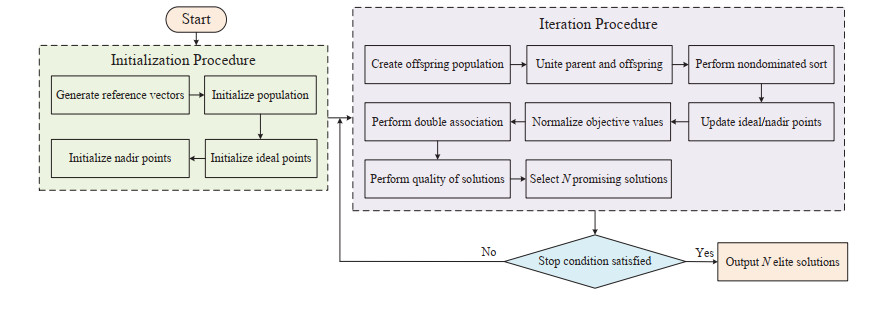|
[1]
|
J. Sun, Z. Miao, D. Gong, X. Zeng, J. Li, G. Wang, Interval multiobjective optimization with memetic algorithms, IEEE Trans. Cybern., 50 (2022), 3444–3457. https://doi.org/10.1109/TCYB.2019.2908485 doi: 10.1109/TCYB.2019.2908485

|
|
[2]
|
Y. Hua, Q. Liu, K. Hao, Y. Jin, A survey of evolutionary algorithms for multi-objective optimization problems with irregular pareto fronts, IEEE-CAA J. Automatica Sin., 8 (2021), 303–318. https://doi.org/10.1109/JAS.2021.1003817 doi: 10.1109/JAS.2021.1003817

|
|
[3]
|
L. Ma, N. Li, Y. Guo, X. Wang, S. Yang, M. Huang, et al., Learning to optimize: Reference vector reinforcement learning adaption to constrained many-objective optimization of industrial copper burdening system, IEEE Trans. Cybern., 52 (2022), 12698–12711. https://doi.org/10.1109/TCYB.2021.3086501 doi: 10.1109/TCYB.2021.3086501

|
|
[4]
|
Z. Zhang, M. Zhao, H. Wang, Z. Cui, W. Zhang, An efficient interval many-objective evolutionary algorithm for cloud task scheduling problem under uncertainty, Inf. Sci., 583 (2022), 56–72. https://doi.org/10.1016/j.ins.2021.11.027 doi: 10.1016/j.ins.2021.11.027

|
|
[5]
|
M. Gao, B. Ai, Y. Niu, W. Wu, P. Yang, F. Lyu, et al., Efficient hybrid beamforming with anti-blockage design for high-speed railway communications, IEEE Trans. Veh. Technol., 69 (2020), 9643–9655. https://doi.org/10.1109/TVT.2020.3000757 doi: 10.1109/TVT.2020.3000757

|
|
[6]
|
C. Tan, J. Yao, K. Tang, J. Sun, Cycle-based queue length estimation for signalized intersections using sparse vehicle trajectory data, IEEE Trans. Intell. Transp. Syst., 22 (2021), 91–106. https://doi.org/10.1109/TITS.2019.2954937 doi: 10.1109/TITS.2019.2954937

|
|
[7]
|
Y. Guo, X. Tian, G. Fang, Y. Xu, Many-objective optimization with improved shuffled frog leaping algorithm for inter-basin water transfers, Adv. Water Resour., 138 (2020), 103531. https://doi.org/10.1016/j.advwatres.2020.103531 doi: 10.1016/j.advwatres.2020.103531

|
|
[8]
|
F. Li, L. Gao, A. Garg, W. Shen, S. Huang, Two infill criteria driven surrogate-assisted multi-objective evolutionary algorithms for computationally expensive problems with medium dimensions, Swarm Evol. Comput., 60 (2021), 100774. https://doi.org/10.1016/j.swevo.2020.100774 doi: 10.1016/j.swevo.2020.100774

|
|
[9]
|
M. Wu, L. Wang, J. Xu, P. Hu, P. Xu, Adaptive surrogate-assisted multi-objective evolutionary algorithm using an efficient infill technique, Swarm Evol. Comput., 75 (2022), 101170. https://doi.org/10.1016/j.swevo.2022.101170 doi: 10.1016/j.swevo.2022.101170

|
|
[10]
|
B. Li, J. Li, K. Tang, X. Yao, Many-objective evolutionary algorithms: A survey, ACM Comput. Surv., 48 (2015), 1–35. https://doi.org/10.1145/2792984 doi: 10.1145/2792984

|
|
[11]
|
K. Deb, A. Pratap, S. Agarwal, T. Meyarivan, A fast and elitist multiobjective genetic algorithm: NSGA-II, IEEE Trans. Evol. Comput., 6 (2002), 182–197. https://doi.org/10.1109/4235.996017 doi: 10.1109/4235.996017

|
|
[12]
|
W. Zhang, J. Liu, S. Tan, H. Wang, A decomposition-rotation dominance based evolutionary algorithm with reference point adaption for many-objective optimization, Expert Syst. Appl., 215 (2023), 119424. https://doi.org/10.1016/j.eswa.2022.119424 doi: 10.1016/j.eswa.2022.119424

|
|
[13]
|
M. Laumanns, L. Thiele, K. Deb, E. Zitzler, Combining convergence and diversity in evolutionary multiobjective optimization, Evol. Comput., 10 (2002), 263–282. https://doi.org/10.1162/106365602760234108 doi: 10.1162/106365602760234108

|
|
[14]
|
P. J. Bentley, J. P. Wakefield, Finding acceptable solutions in the Pareto-optimal range using multiobjective genetic algorithms, in Soft Computing in Engineering Design and Manufacturing, (1998), 231–240. https://doi.org/10.1007/978-1-4471-0427-8
|
|
[15]
|
D. Hadka, P. Reed, Borg: An auto-adaptive many-objective evolutionary computing framework, Evol. Comput., 21 (2013), 231–259. https://doi.org/10.1162/EVCO_a_00075 doi: 10.1162/EVCO_a_00075

|
|
[16]
|
X. Zou, Y. Chen, M. Liu, L. Kang, A new evolutionary algorithm for solving many-objective optimization problems, IEEE Trans. Syst. Man Cybern. Part B Cybern., 38 (2008), 1402–1412. https://doi.org/10.1109/TSMCB.2008.926329 doi: 10.1109/TSMCB.2008.926329

|
|
[17]
|
L. Li, G. Li, L. Chang, A many-objective particle swarm optimization with grid dominance ranking and clustering, Appl. Soft. Comput., 96 (2020), 106661. https://doi.org/10.1016/j.asoc.2020.106661 doi: 10.1016/j.asoc.2020.106661

|
|
[18]
|
F. D. Pierro, S. T. Khu, D. A. Savic, An investigation on preference order ranking scheme for multiobjective evolutionary optimization, IEEE Trans. Evol. Comput., 11 (2007), 17–45. https://doi.org/10.1109/TEVC.2006.876362 doi: 10.1109/TEVC.2006.876362

|
|
[19]
|
G. Wang, H. Jiang, Fuzzy-dominance and its application in evolutionary many objective optimization, in 2007 International Conference on Computational Intelligence and Security Workshops, 2007. https://doi.org/10.1109/CISW.2007.4425478
|
|
[20]
|
Y. Yuan, H. Xu, B. Wang, X. Yao, A new dominance relation based evolutionary algorithm for many-objective optimization, IEEE Trans. Evol. Comput., 20 (2015), 16–37. https://doi.org/10.1109/TEVC.2015.2420112 doi: 10.1109/TEVC.2015.2420112

|
|
[21]
|
M. Elarbi, S. Bechikh, A. Gupta, L. B. Said, Y. S. Ong, A new decomposition-based NSGA-II for many-objective optimization, IEEE Trans. Syst. Man Cybern. Syst., 48 (2018), 1191–1210. https://doi.org/10.1109/TSMC.2017.2654301 doi: 10.1109/TSMC.2017.2654301

|
|
[22]
|
K. Ikeda, H. Kita, S. Kobayashi, Failure of pareto-based MOEAs: Does non-dominated really mean near to optimal?, in Proceedings of the 2001 Congress on Evolutionary Computation, 2001. https://doi.org/10.1109/CEC.2001.934293
|
|
[23]
|
H. Sato, H. E. Aguirre, K. Tanaka, Controlling dominance area of solutions and its impact on the performance of moeas, in International Conference on Evolutionary Multi-Criterion Optimization, 2007. https://doi.org/10.1007/978-3-540-70928-2_5
|
|
[24]
|
C. Dai, Y. Wang, M. Ye, A new evolutionary algorithm based on contraction method for many-objective optimization problems, Appl. Math. Comput., 245 (2014), 191–205. https://doi.org/10.1016/j.amc.2014.07.069 doi: 10.1016/j.amc.2014.07.069

|
|
[25]
|
H. Ishibuchi, N. Tsukamoto, Y. Sakane, Y. Nojima, Indicator-based evolutionary algorithm with hypervolume approximation by achievement scalarizing functions, in Proceedings of the Conference on Genetic and Evolutionary Computation, 2010. https://doi.org/10.1145/1830483.1830578
|
|
[26]
|
Y. Sun, G. G. Yen, Z. Yi, IGD indicator-based evolutionary algorithm for many-objective optimization problems, IEEE Trans. Evol. Comput., 23 (2019), 173–187. https://doi.org/10.1109/TEVC.2018.2791283 doi: 10.1109/TEVC.2018.2791283

|
|
[27]
|
E. Zitzler, L. Thiele, Multiobjective evolutionary algorithms: A comparative case study and the strength pareto approach, IEEE Trans. Evol. Comput., 3 (1999), 257–271. https://doi.org/10.1109/4235.797969 doi: 10.1109/4235.797969

|
|
[28]
|
C. A. Rodríguez-Villalobos, C. A. C. Coello, A new multi-objective evolutionary algorithm based on a performance assessment indicator, in Conference on Genetic and Evolutionary Computation, 2012. https://doi.org/10.1145/2330163.2330235
|
|
[29]
|
J. Bader, E. Zitzler, HypE: An algorithm for fast hypervolume-based many-objective optimization, Evol. Comput., 19 (2014), 45–76. https://doi.org/10.1162/EVCO_a_00009 doi: 10.1162/EVCO_a_00009

|
|
[30]
|
S. Jiang, S. Yang, A strength pareto evolutionary algorithm based on reference direction for multiobjective and many-objective optimization, IEEE Trans. Evol. Comput., 21 (2017), 329–346. https://doi.org/10.1109/TEVC.2016.2592479 doi: 10.1109/TEVC.2016.2592479

|
|
[31]
|
K. Deb, D. Saxena, On finding pareto-optimal solutions through dimensionality reduction for certain large-dimensional multi-objective optimization problems, Kangal Rep., 2005 (2005), 1–19.
|
|
[32]
|
H. K. Singh, A. Isaacs, T. Ray, A pareto corner search evolutionary algorithm and dimensionality reduction in many-objective optimization problems, IEEE Trans. Evol. Comput., 15 (2011), 539–556. https://doi.org/10.1109/TEVC.2010.2093579 doi: 10.1109/TEVC.2010.2093579

|
|
[33]
|
L. Thiele, K. Miettinen, P. J. Korhonen, J. Molina, A preference based evolutionary algorithm for multi-objective optimization, Evol. Comput., 17 (2014), 411–436. https://doi.org/10.1162/evco.2009.17.3.411 doi: 10.1162/evco.2009.17.3.411

|
|
[34]
|
R. Wang, R. C. Purshouse, P. J. Fleming, Preference-inspired coevolutionary algorithms for many-objective optimization, IEEE Trans. Evol. Comput., 17 (2013), 474–494. https://doi.org/10.1109/TEVC.2012.2204264 doi: 10.1109/TEVC.2012.2204264

|
|
[35]
|
R. Cheng, Y. Jin, M. Olhofer, B. Sendhoff, A reference vector guided evolutionary algorithm for many-objective optimization, IEEE Trans. Evol. Comput., 20 (2016), 773–791. https://doi.org/10.1109/TEVC.2016.2519378 doi: 10.1109/TEVC.2016.2519378

|
|
[36]
|
Y. Zhao, J. Zeng, Y. Tan, Neighborhood samples and surrogate assisted multi-objective evolutionary algorithm for expensive many-objective optimization problems, Appl. Soft. Comput., 17 (2013), 474–494. https://doi.org/10.1016/j.asoc.2021.107268 doi: 10.1016/j.asoc.2021.107268

|
|
[37]
|
Q. Zhang, H. Li, MOEA/D: A multiobjective evolutionary algorithm based on decomposition, IEEE Trans. Evol. Comput., 11 (2007), 712–731. https://doi.org/10.1109/TEVC.2007.892759 doi: 10.1109/TEVC.2007.892759

|
|
[38]
|
H. Zhao, C. Zhang, X. Zheng, C. Zhang, B. Zhang, A decomposition-based many-objective ant colony optimization algorithm with adaptive solution construction and selection approaches, Swarm Evol. Comput., 68 (2022), 100977. https://doi.org/10.1016/j.swevo.2021.100977 doi: 10.1016/j.swevo.2021.100977

|
|
[39]
|
Y. Zhou, Y. Xiang, Z. Chen, J. He, J. Wang, An adaptive convergence enhanced evolutionary algorithm for many-objective optimization problems, Swarm Evol. Comput., 75 (2022), 101180. https://doi.org/10.1016/j.swevo.2022.101180 doi: 10.1016/j.swevo.2022.101180

|
|
[40]
|
F. Gu, Y. M. Cheung, Self-organizing map-based weight design for decomposition-based many-objective evolutionary algorithm, IEEE Trans. Evol. Comput., 22 (2018), 211–225. https://doi.org/10.1109/TEVC.2017.2695579 doi: 10.1109/TEVC.2017.2695579

|
|
[41]
|
D. Han, W. Du, W. Du, Y. Jin, C. Wu, An adaptive decomposition based evolutionary algorithm for many-objective optimization, Inf. Sci., 491 (2019), 204–222. https://doi.org/10.1016/j.ins.2019.03.062 doi: 10.1016/j.ins.2019.03.062

|
|
[42]
|
R. Liu, J. Liu, R. Zhou, C. Lian, R. Bian, A region division based decomposition approach for evolutionary many-objective optimization, Knowl. Based Syst., 194 (2020), 105518. https://doi.org/10.1016/j.knosys.2020.105518 doi: 10.1016/j.knosys.2020.105518

|
|
[43]
|
H. Zhao, C. Zhang, B. Zhang, A decomposition-based many-objective ant colony optimization algorithm with adaptive reference points, Inf. Sci., 540 (2020), 435–448. https://doi.org/10.1016/j.ins.2020.06.028 doi: 10.1016/j.ins.2020.06.028

|
|
[44]
|
L. Ma, M. Huang, S. Yang, R. Wang, X. Wang, An adaptive localized decision variable analysis approach to large-scale multiobjective and many-objective optimization, IEEE Trans. Cybern., 52 (2022), 6684–6696. https://doi.org/10.1109/TCYB.2020.3041212 doi: 10.1109/TCYB.2020.3041212

|
|
[45]
|
Y. Zhang, G. Wang, K. Li, W. Yeh, M. Jian, J. Dong, Enhancing MOEA/D with information feedback models for large-scale many-objective optimization, Inf. Sci., 522 (2020), 1–16. https://doi.org/10.1016/j.ins.2020.02.066 doi: 10.1016/j.ins.2020.02.066

|
|
[46]
|
Y. Sun, B. Xue, M. Zhang, G. G. Yen, A new two-stage evolutionary algorithm for many-objective optimization, IEEE Trans. Evol. Comput., 23 (2019), 748–761. https://doi.org/10.1109/TEVC.2018.2882166 doi: 10.1109/TEVC.2018.2882166

|
|
[47]
|
K. Deb, H. Jain, An evolutionary many-objective optimization algorithm using reference-point-based nondominated sorting approach, part I: Solving problems with box constraints, IEEE Trans. Evol. Comput., 18 (2014), 577–601. https://doi.org/10.1109/TEVC.2013.2281535 doi: 10.1109/TEVC.2013.2281535

|
|
[48]
|
J. Yi, L. Xing, G. Wang, J. Dong, A. V. Vasilakos, A. H. Alavi, et al., Behavior of crossover operators in NSGA-III for large-scale optimization problems, Inf. Sci., 509 (2020), 470–487. https://doi.org/10.1016/j.ins.2018.10.005 doi: 10.1016/j.ins.2018.10.005

|
|
[49]
|
I. Das, J. E. Dennis, Normal-boundary intersection: A new method for generating the pareto surface in nonlinear multicriteria optimization problems, SIAM J. Optim., 8 (2006), 631–657. https://doi.org/10.1137/S1052623496307510 doi: 10.1137/S1052623496307510

|
|
[50]
|
K. Deb, R. B. Agrawal, Simulated binary crossover for continuous search space, Complex Syst., 9 (1994), 115–148.
|
|
[51]
|
K. Deb, M. Goyal, A combined genetic adaptive search (GeneAS) for engineering design, Comput. Sci. Inf., 26 (1996), 30–45.
|
|
[52]
|
C. Dai, Y. Wang, A new multiobjective evolutionary algorithm based on decomposition of the objective space for multiobjective optimization, J. Appl. Math., 2014 (2014), 1–9. https://doi.org/10.1155/2014/906147 doi: 10.1155/2014/906147

|
|
[53]
|
Y. Yuan, H. Xu, B. Wang, An improved NSGA-III procedure for evolutionary many-objective optimization, in 16th Genetic and Evolutionary Computation Conference, 2014. https://doi.org/10.1145/2576768.2598342
|
|
[54]
|
Y. Tian, R. Cheng, X. Zhang, Y. Jin, PlatEMO: A matlab platform for evolutionary multi-objective optimization [educational forum], IEEE Comput. Intell. Mag., 12 (2017), 73–87. https://doi.org/10.1109/MCI.2017.2742868 doi: 10.1109/MCI.2017.2742868

|
|
[55]
|
K. Deb, L. Thiele, M. Laumanns, E. Zitzler, Scalable multi-objective optimization test problems, in Proceedings of the 2002 Congress on Evolutionary Computation, 2002. https://doi.org/10.1109/CEC.2002.1007032
|
|
[56]
|
S. Huband, P. Hingston, L. Barone, L. While, A review of multiobjective test problems and a scalable test problem toolkit, IEEE Trans. Evol. Comput., 10 (2006), 477–506. https://doi.org/10.1109/TEVC.2005.861417 doi: 10.1109/TEVC.2005.861417

|
|
[57]
|
E. Zitzler, L. Thiele, M. Laumanns, C. M. Fonseca, V. G. D. Fonseca, Performance assessment of multiobjective optimizers: An analysis and review, IEEE Trans. Evol. Comput., 7 (2003), 117–132. https://doi.org/10.1109/TEVC.2003.810758 doi: 10.1109/TEVC.2003.810758

|
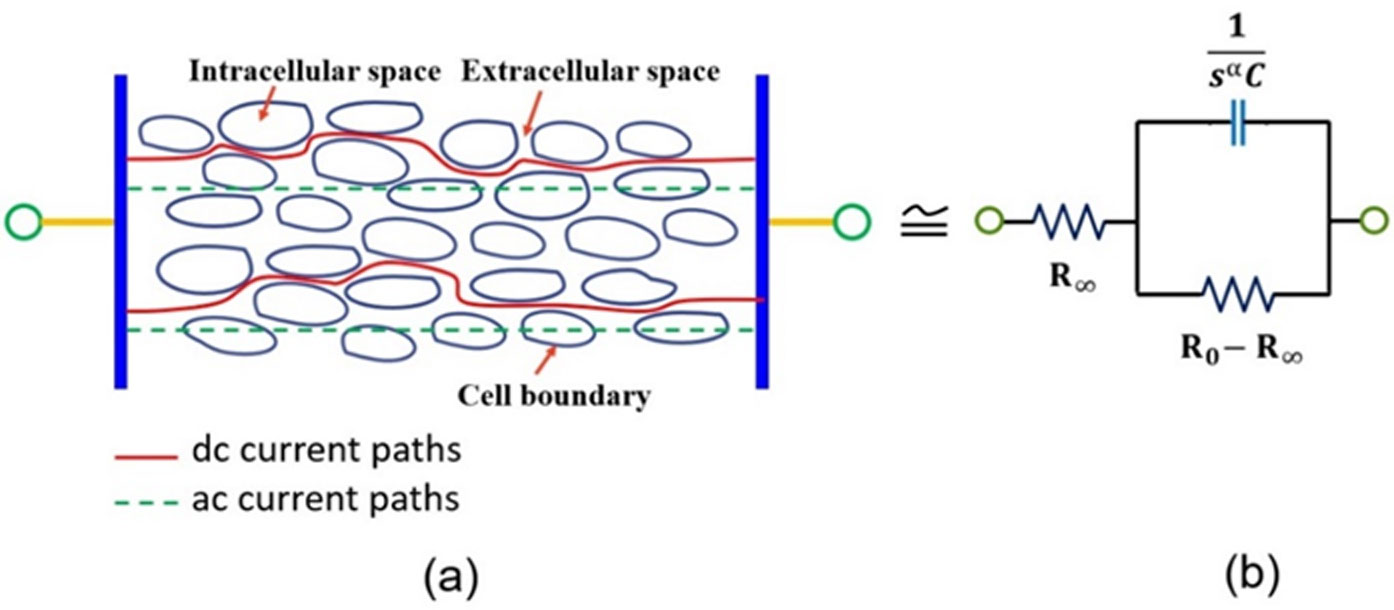









 DownLoad:
DownLoad:
